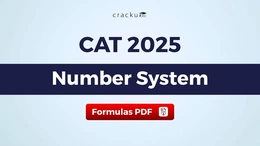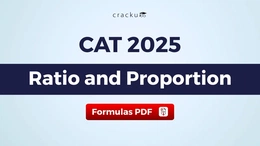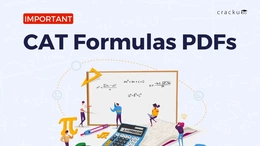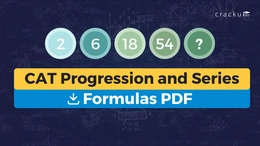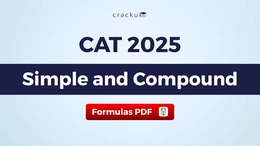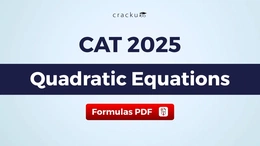CAT Probability FORMULAS is a fundamental concept in probability theory, and its applications extend to various fields, including finance, economics, and machine learning. A solid understanding of these concepts is crucial for CAT aspirants as they frequently appear in the CAT quantitative aptitude section.
In this blog, we will discuss by aspirants should not leave CAT Exam Probability Concepts. We will also discuss the weightage of Bayes Theorem Applications in CAT. One can download the Bayes Theorem Conditional Probability Formulae PDF from Cracku.in
CAT Probability Formulas PDF
The CAT exam aims to evaluate candidates' logical reasoning and problem-solving abilities. It includes CAT questions on conditional probability and Bayes' theorem to test their understanding of these concepts. Mastering these topics can significantly improve performance in the quantitative section of the exam.
Additionally, a good understanding of these concepts can also be helpful in other sections such as data interpretation and logical reasoning.
Download CAT Probability Formulas Pdf
Weightage of Conditional Probability and Bayes Theorem in CAT
While the exact weightage of these topics fluctuates from year to year, it's safe to say that conditional probability and Bayes theorem questions constitute a significant portion of the probability-based questions in the CAT exam. Expect to encounter at least 2-3 questions based on these concepts.
Sub-topics Within CAT Bayes Theorem Conditional Probability
To effectively prepare for CAT, it's essential to have a clear understanding of the following sub-topics:
- Conditional Probability: This concept deals with the probability of an event occurring given that another event has already occurred. It's represented as P(A|B), which reads as "the probability of A given B."
- Bayes' Theorem: This theorem provides a way to update the probability of an event based on new information. It's particularly useful in cases where we have prior information about the event and want to revise our estimate based on new evidence.
- Law of Total Probability: This law is used to calculate the total probability of an event by considering all possible outcomes of a related event.
- Independent Events: Two events are said to be independent if the occurrence of one event does not affect the probability of the occurrence of the other event.
Looking for hardcopy handbook?
Order below. Delivery charges are on us :)

Tips to Ace Bayes Theorem Applications in CAT
- Conceptual Clarity: Ensure you have a strong grasp of the underlying concepts. Avoid rote memorization of formulas.
- Practice Regularly: Solve a variety of problems to build your problem-solving skills. This will help you identify different types of questions and develop appropriate approaches.
- Visualize Problems: Use diagrams or tables to represent the information given in the problem. This can help you visualize the relationships between events and make the problem easier to solve.
- Understand the Language: Pay close attention to the wording of the questions. The language used can often provide clues about the type of problem and the approach to be used.
- Time Management: Practice solving questions within a time limit to improve your speed and accuracy.
Conclusion
Mastering Bayes' Theorem and conditional probability is a game-changer for CAT aspirants. By understanding these concepts, you can significantly enhance your problem-solving abilities and improve your chances of acing the quantitative section. While the formulas are crucial, it's equally important to grasp the underlying logic and apply it to different scenarios. Consistent practice is key to building confidence and proficiency.
Want to dive deeper into the conditional probability and Bayes Theorem Applications in CAT? Cracku offers a comprehensive range of study materials, mock tests, and expert guidance to help you conquer the quant section. With in-depth video lectures, practice questions, and doubt-clearing sessions, Cracku is your one-stop solution for CAT preparation.
Don't wait! Enroll in Cracku's CAT crash course today and take the first step towards achieving your dream MBA.




